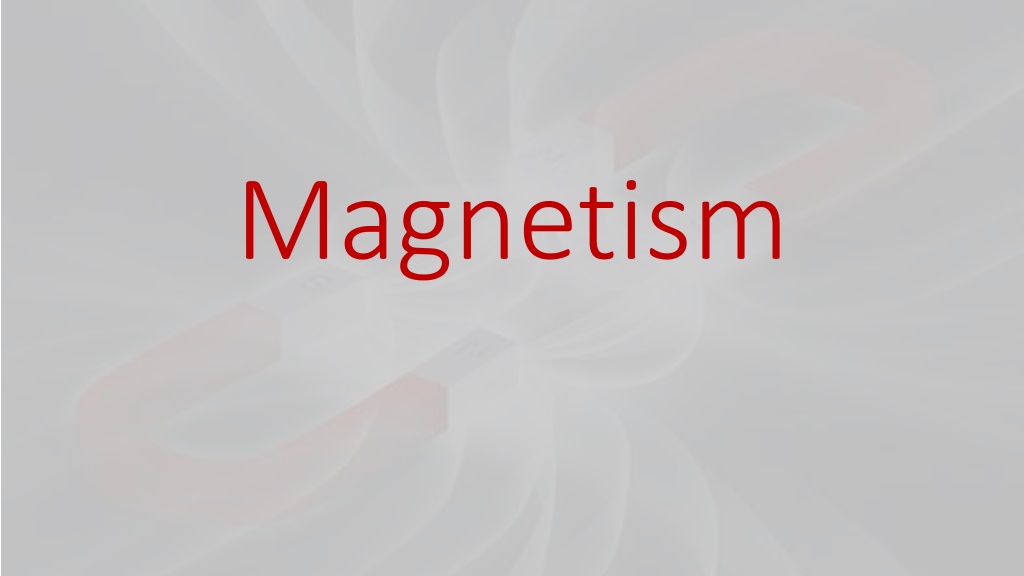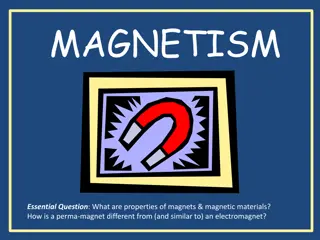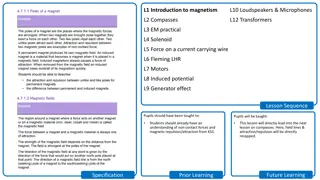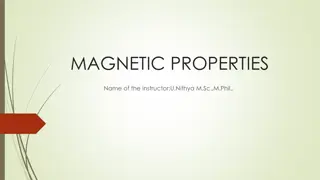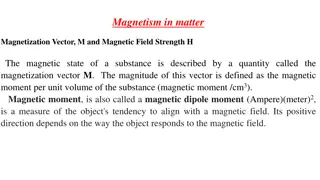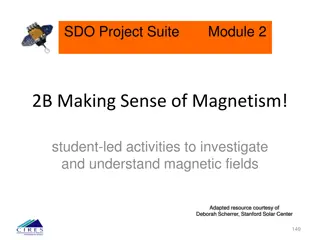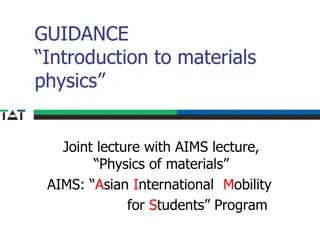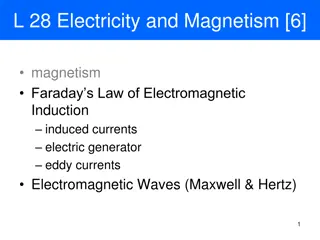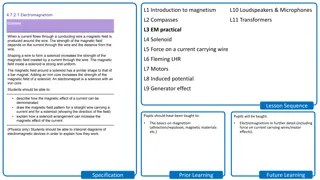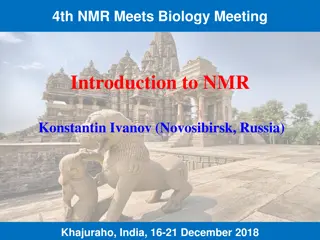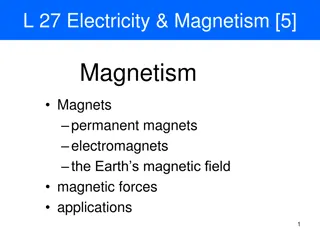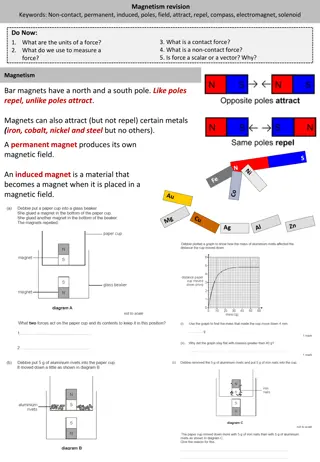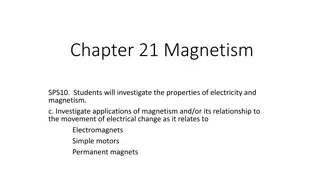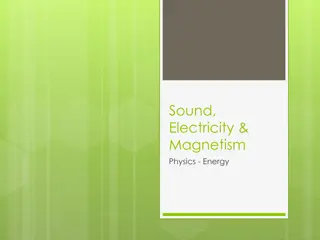Magnetism
Magnetism is a fascinating natural phenomenon that involves the interaction between magnetic materials. Learn about the properties of magnets, their effects, and how they are used in everyday life. Explore the concept of magnetic fields, different types of magnets, and the significance of Earth's magnetic field. Discover the attraction and repulsion forces, magnetic materials, and the widespread applications of permanent magnets in various tools and devices.
Download Presentation

Please find below an Image/Link to download the presentation.
The content on the website is provided AS IS for your information and personal use only. It may not be sold, licensed, or shared on other websites without obtaining consent from the author.If you encounter any issues during the download, it is possible that the publisher has removed the file from their server.
You are allowed to download the files provided on this website for personal or commercial use, subject to the condition that they are used lawfully. All files are the property of their respective owners.
The content on the website is provided AS IS for your information and personal use only. It may not be sold, licensed, or shared on other websites without obtaining consent from the author.
E N D
Presentation Transcript
What Is a Magnet? A magnet is a metal which attracts or repels other materials. A magnet is made from iron, nickel, steel or cobalt. A magnet has a north end and a south end. Using two bar magnets, see what happens when you put the two blue ends together, the two red ends together and then a blue and a red end together. When a magnet attracts another material, there is a pulling force between the two objects. When a magnet repels another material, there is a pushing force between the two objects. Can you think of any magnets used at home? If you observe an object being attracted to a magnet, this is magnetism. Think about it! Have a Go!
- Permanent magnets can come in lots of different shapes and sizes. Bar magnets and horseshoe magnets are two of the most common shapes of magnet. - One of the most important features of a permanent magnet, whatever shape it is, is that it has two different ends. These ends are called . There is a north (N) pole and a south (S) pole. The magnetic effect is the strongest at the poles.
Different poles attract. Alike poles repel. Alike poles repel.
A magnetic force can be either an attraction or a repulsion The region around a magnet where a force can be felt is called the magnetic field. If enter this region, they will be attracted to the magnet. The magnetic field of a magnet is shown by lines with arrows that point from North to South.
Magnetic materials: Magnetic materials are materials that feel a force from a magnetic field. If you bring a magnet and a magnetic material together they will pull towards each other, or attract. The attraction gets stronger as the a magnetic material gets closer. Some materials are magnetic. For example: iron, steel, cobalt, nickel. Lots of metals are not magnetic. For example: copper, aluminium. Materials such as sand, wood and plastic are not magnetic.
Earth acts as a magnet: Earth acts as a magnet: Earth acts as a magnet with two poles, and a magnetic field over which exerts magnetic force. It is because the core of the Earth is made mostly of metal iron.
Permanant Permanant magnets: magnets: They are found in hundreds of tools: in toys and different machines, like: magnets on cabinet door, motors of electric trains, credit cards and kitchen tools. They are also called permanent magnets, they are magnets all the time and keep their magnetism for months or years.
Animals and magnetism Some animals seem to sense magnetism They use it to help them navigate, or find their way while migrating. These include birds like swallows and geese. Large sea mammals like whales and seals. Fish like salmon. Land animals like caribou. These animals seem to have a built-in compass.
